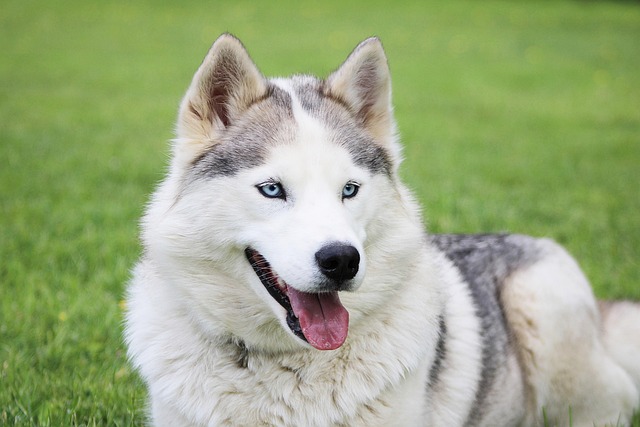
How are dogs infected with ear mites
If you’re a new dog owner in California staring at your 7-month-old Corgi’s red, itchy ear—just after a playdate at the park—or a first-timer in Ohio wondering how your indoor
If you’re a new dog owner in California who’s already taken your 1-year-old Pug to the vet twice for eye infections, or a first-timer in Ohio staring at your Lab mix’s red, watery eye—again—you’re probably asking: “Why does this keep happening?” Recurring eye infections feel frustrating, but they almost always have a clear cause, and fixing it doesn’t require being a pet expert. Let’s break down the common reasons your pup’s eyes keep acting up, how to spot patterns, and what U.S. pet parents need to know to stop the cycle.
First, the simple science (no fancy jargon): Dogs get repeated eye infections when a “trigger” keeps irritating their eyes or their body can’t fight off bacteria easily. The top culprits? Breed traits: Short-nosed dogs like Pugs or Shih Tzus have bulging eyes that are less protected—dust, pollen, or even a tiny wind-blown leaf can get stuck easily. Environment matters too: Florida’s humid spring means more pollen (my client’s Corgi there gets infections every April), while Colorado’s dry air dries out eye tissue, making it prone to irritation. Hidden health issues are another big one—allergies (to grass, dust mites, or even your laundry detergent) or blocked tear ducts can make eyes moist and bacteria-friendly. A client in Oregon learned this the hard way: Her Rescue Pit Bull kept getting infections until the vet found she was allergic to local pine pollen—once they adjusted her diet and environment, the infections stopped.

Stopping the cycle means figuring out your dog’s trigger and building simple habits—paired with positive training, so it’s stress-free. Start with a “trigger log”: Jot down when infections happen (e.g., “after hikes in the park” or “when I use lavender laundry soap”). Next, daily eye care: Use vet-recommended eye wipes to gently clean the corner of their eyes—this wipes away gunk that traps bacteria. A client in Colorado told me her Shih Tzu used to run from the wipes until she started calling it “pawty time” and giving a freeze-dried sweet potato treat after each wipe. For breed-specific issues (like your Pug’s bulging eyes), ask your vet about a protective eye balm to keep irritants out. Also, keep their environment clean: Vacuum your apartment weekly (dust mites love carpet!), and close windows on high-pollen days (check apps like Pollen.com for local counts).
Now, let’s cover U.S. rules and culture. First, compliance: Every state requires rabies vaccines, but cities like Chicago and Seattle mandate annual vet checkups—these visits are key to finding hidden causes (like allergies) that you might miss. Skipping checkups could mean letting infections get worse, which might violate local “responsible pet owner” laws (some areas fine owners for neglecting recurring health issues). On culture: Never force your dog’s eye open to clean it or yell if they squirm—physical punishment breaks trust, and scared dogs hide pain, making it harder to spot early signs. If they resist, pause, give a treat, and try again later—positive reinforcement is how we teach them care is safe.
For apartment living: Avoid using scented candles or air fresheners—these irritate sensitive eyes. And community rules: Always carry poop bags on walks (New York City fines up to $300 for forgetting!) and keep your dog leashed—loose pups might rub their eyes on dirty grass or jump in muddy puddles (a bacteria hotspot). If your building has a dog park, skip it when it’s wet—moisture spreads germs fast.
Recurring eye infections aren’t a “bad dog” problem—they’re a puzzle to solve. By logging triggers, keeping up with gentle care, and working with your vet, you’ll stop the cycle. Grab that treat bag, start your log, and take it slow—your pup’s bright, infection-free eyes will be worth it.

If you’re a new dog owner in California staring at your 7-month-old Corgi’s red, itchy ear—just after a playdate at the park—or a first-timer in Ohio wondering how your indoor

That frantic head shaking and constant scratching at the ears can make any dog owner wonder if ear mites are the culprit. While ear mites are a common assumption

Many dog owners pause when they spot tiny, thread-like objects in their pup’s poop after deworming—wondering if those could be dead hookworms.

If you’re a new dog owner in California who’s already taken your 1-year-old Pug to the vet twice for eye infections, or a first-timer in Ohio staring at your Lab mix’s red

If you’re a new dog owner in California staring at your 8-month-old Poodle’s watery eye, noticing a tiny bit of clear discharge, or a first-timer in Ohio panicking because

If you’re a new dog owner in California staring at your 1-year-old Goldendoodle who won’t stop licking her front paws after hikes, or a first-timer in